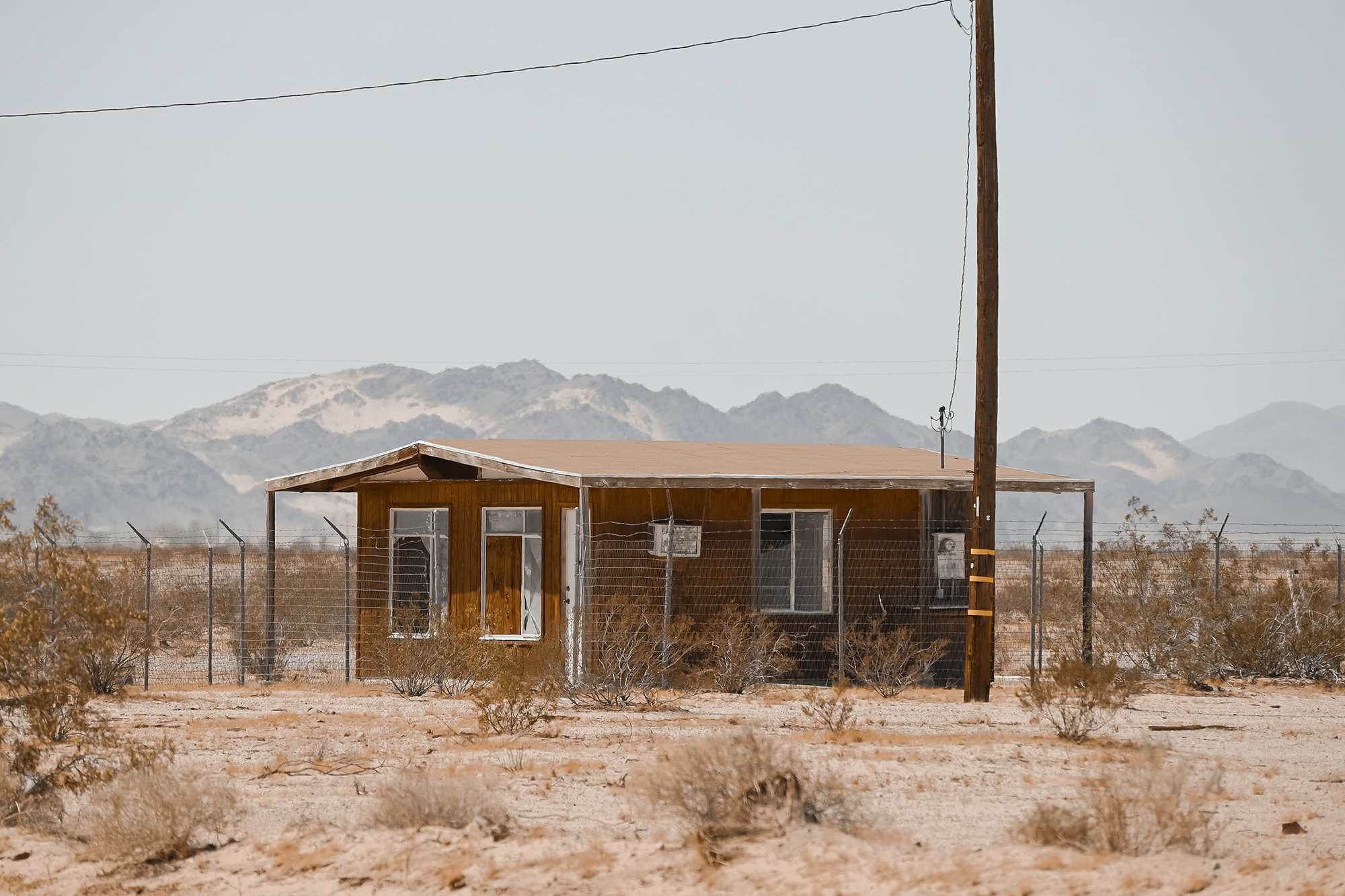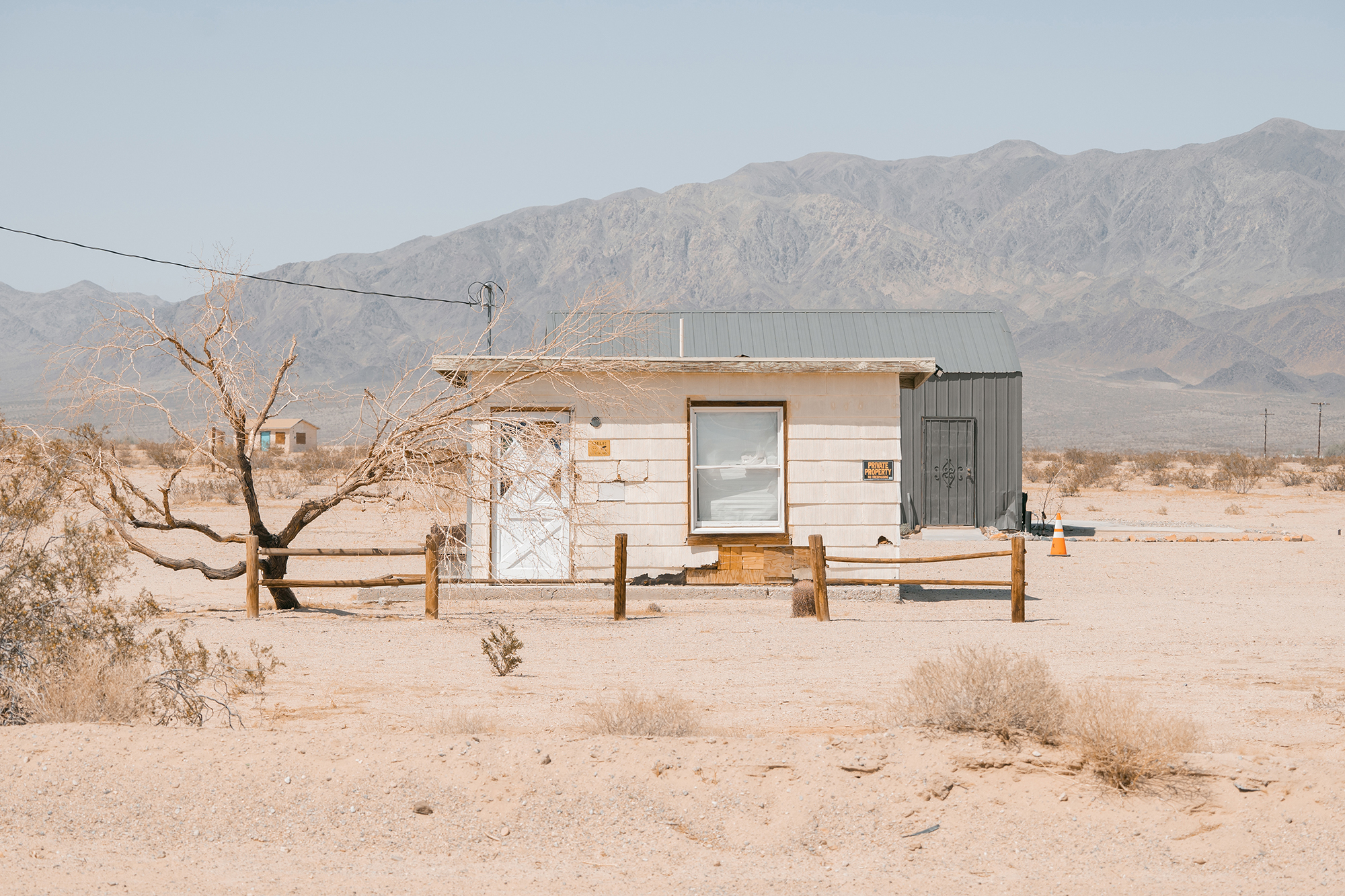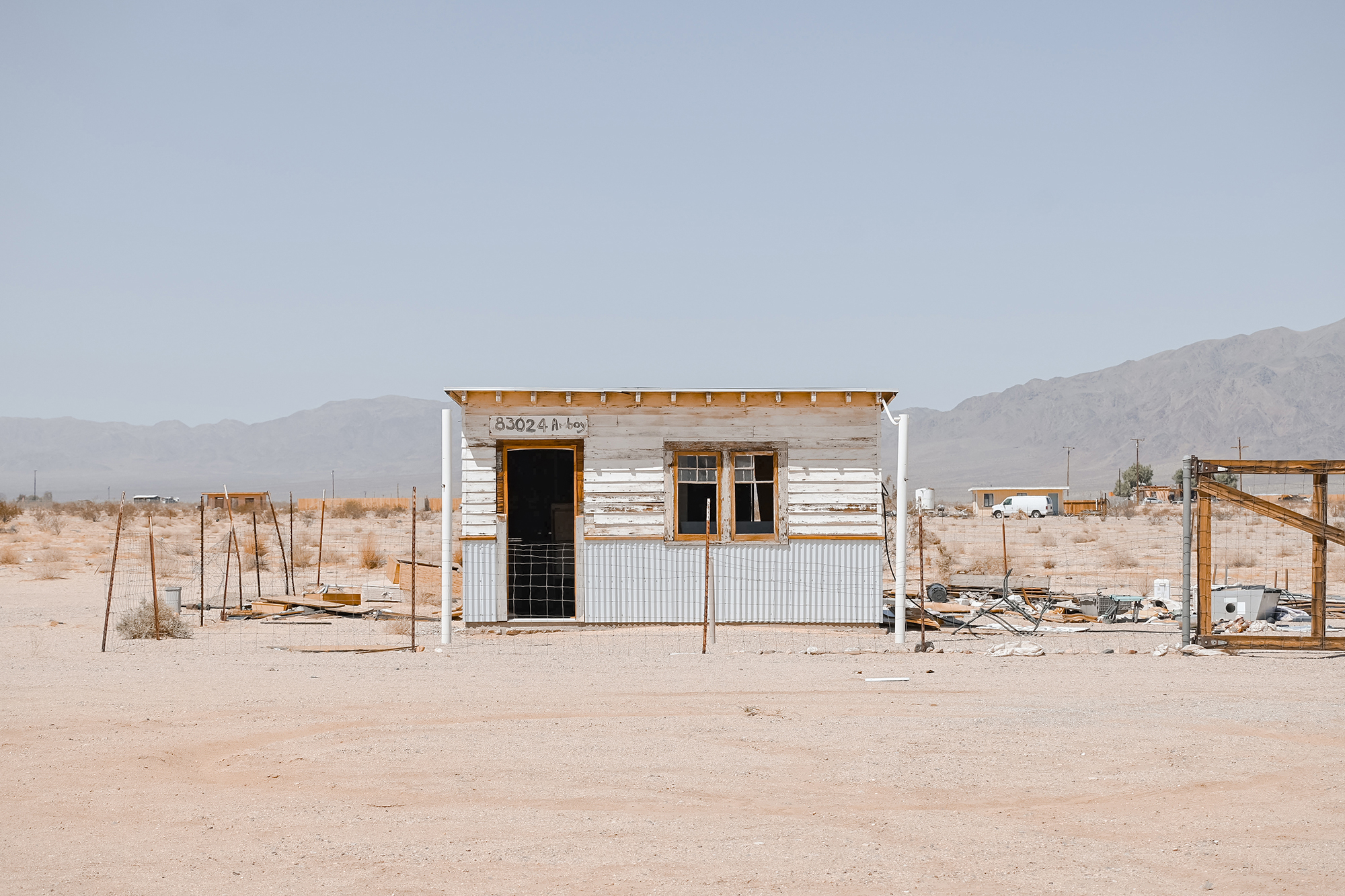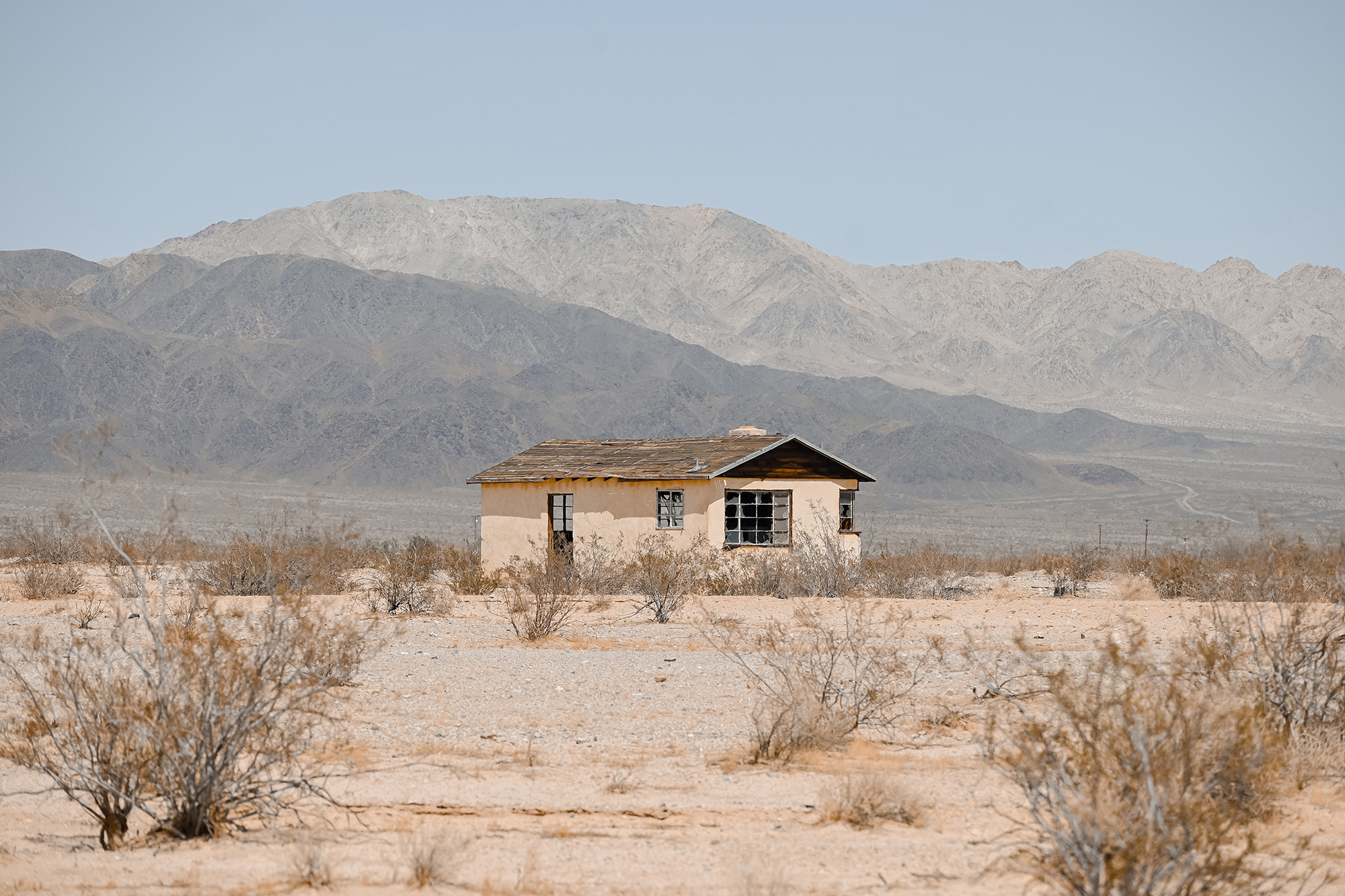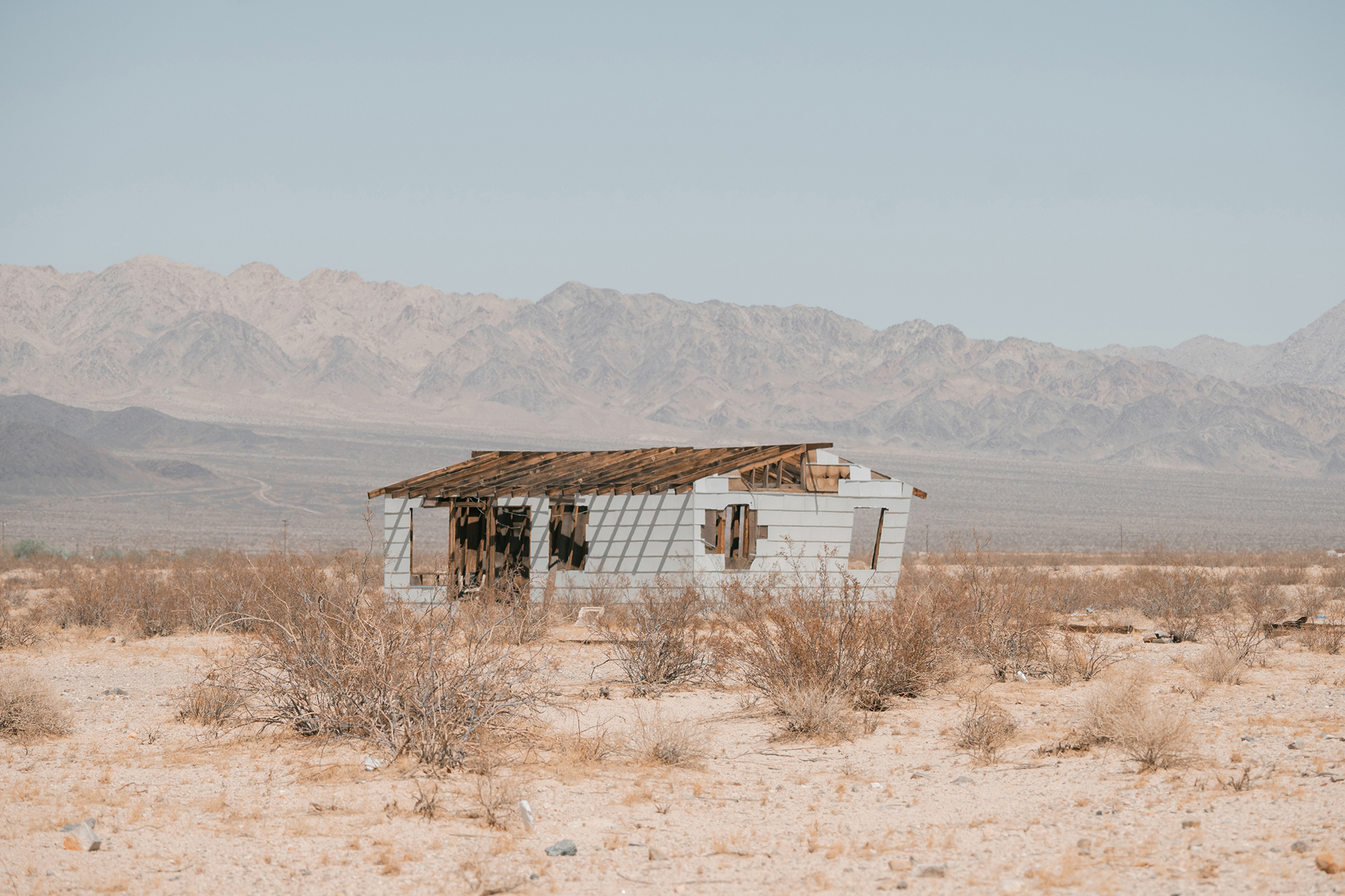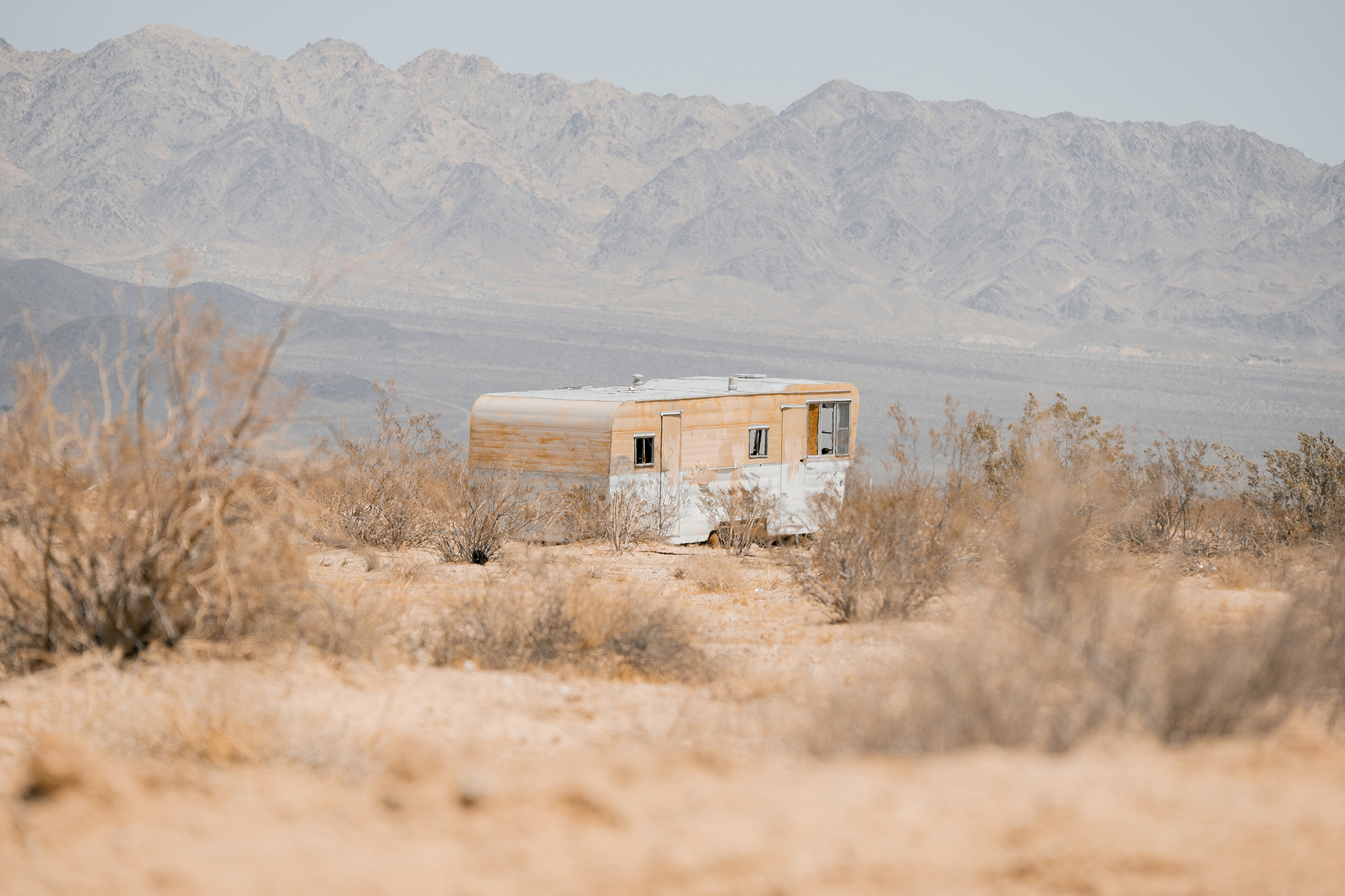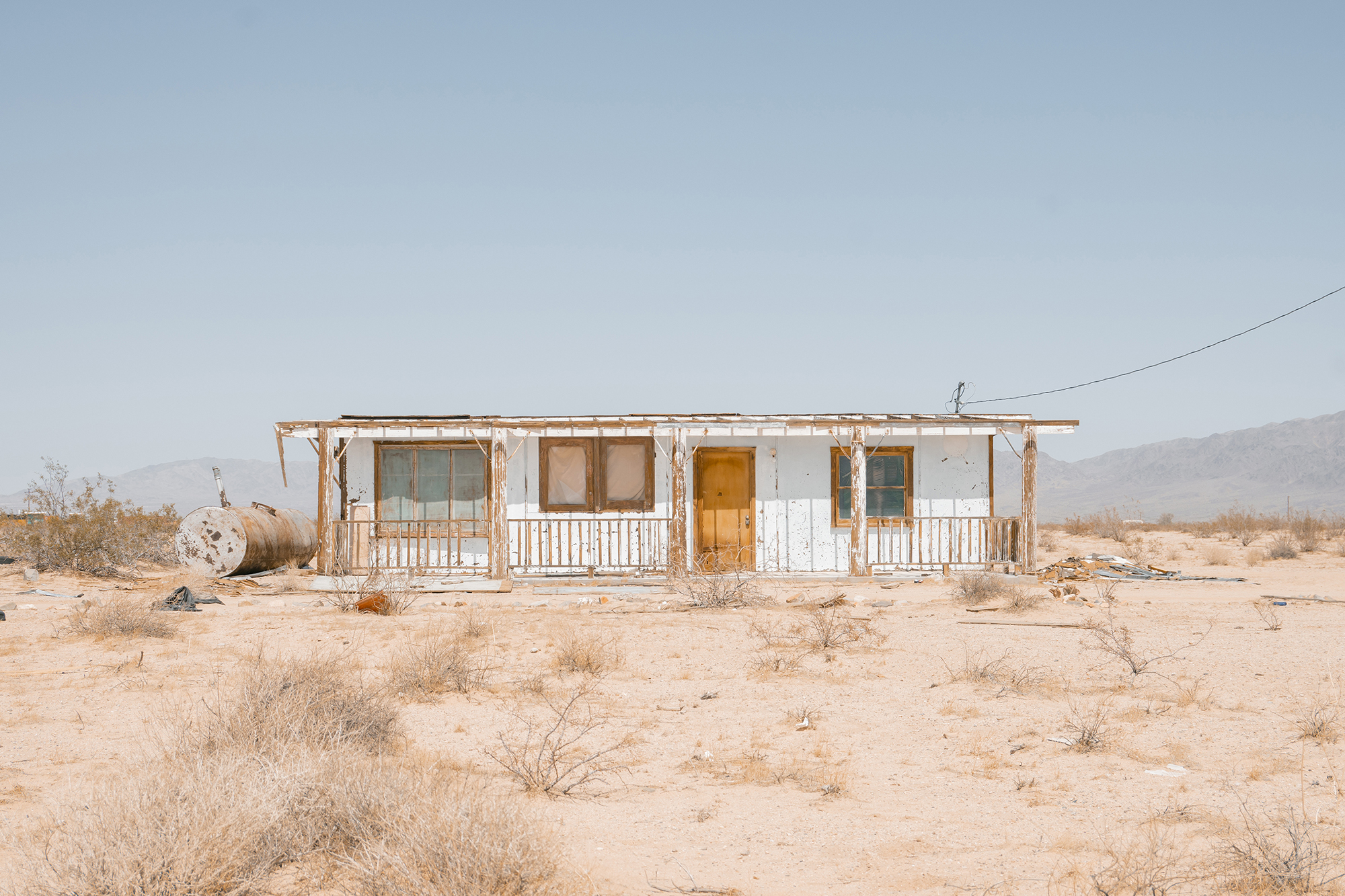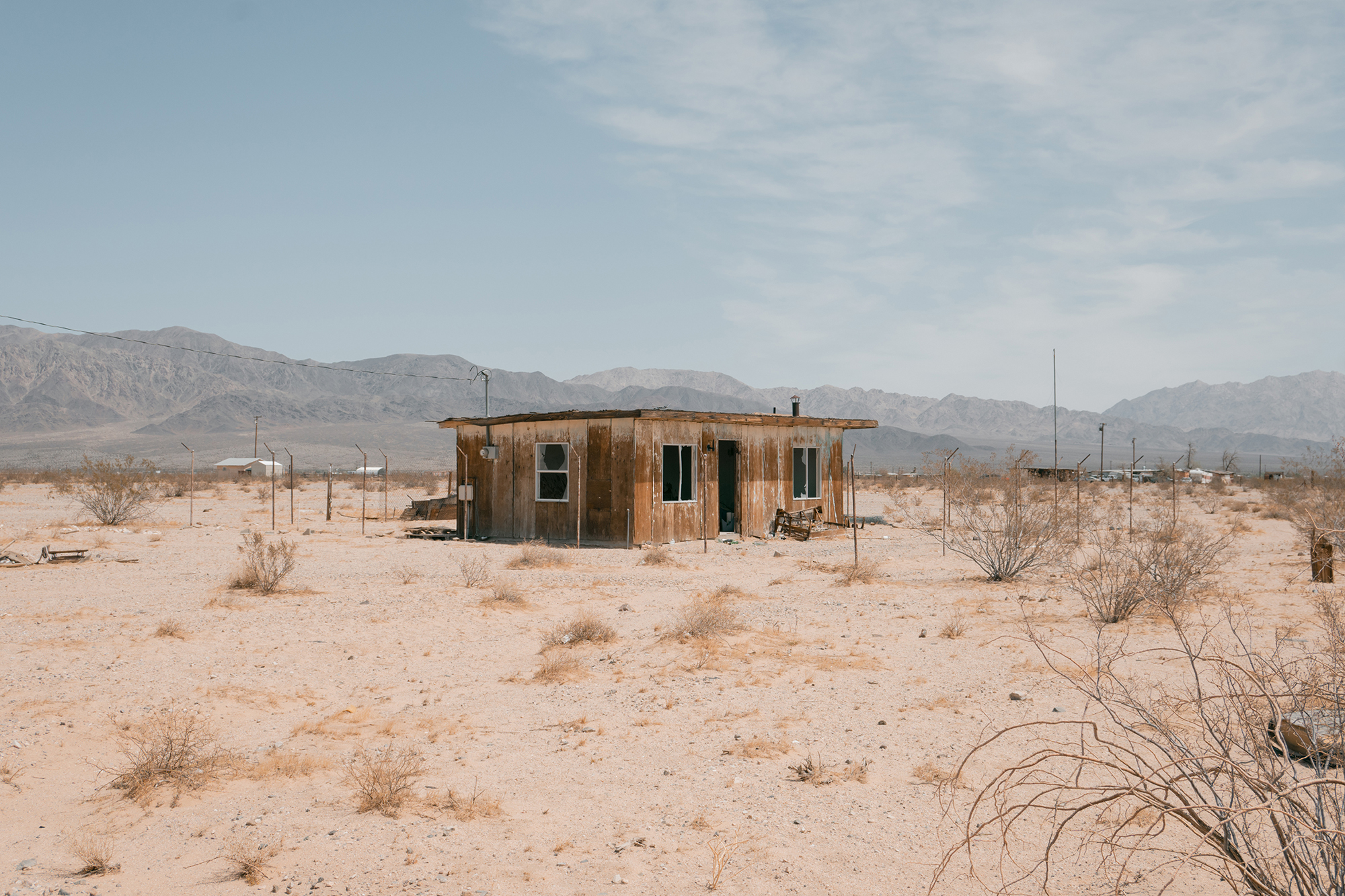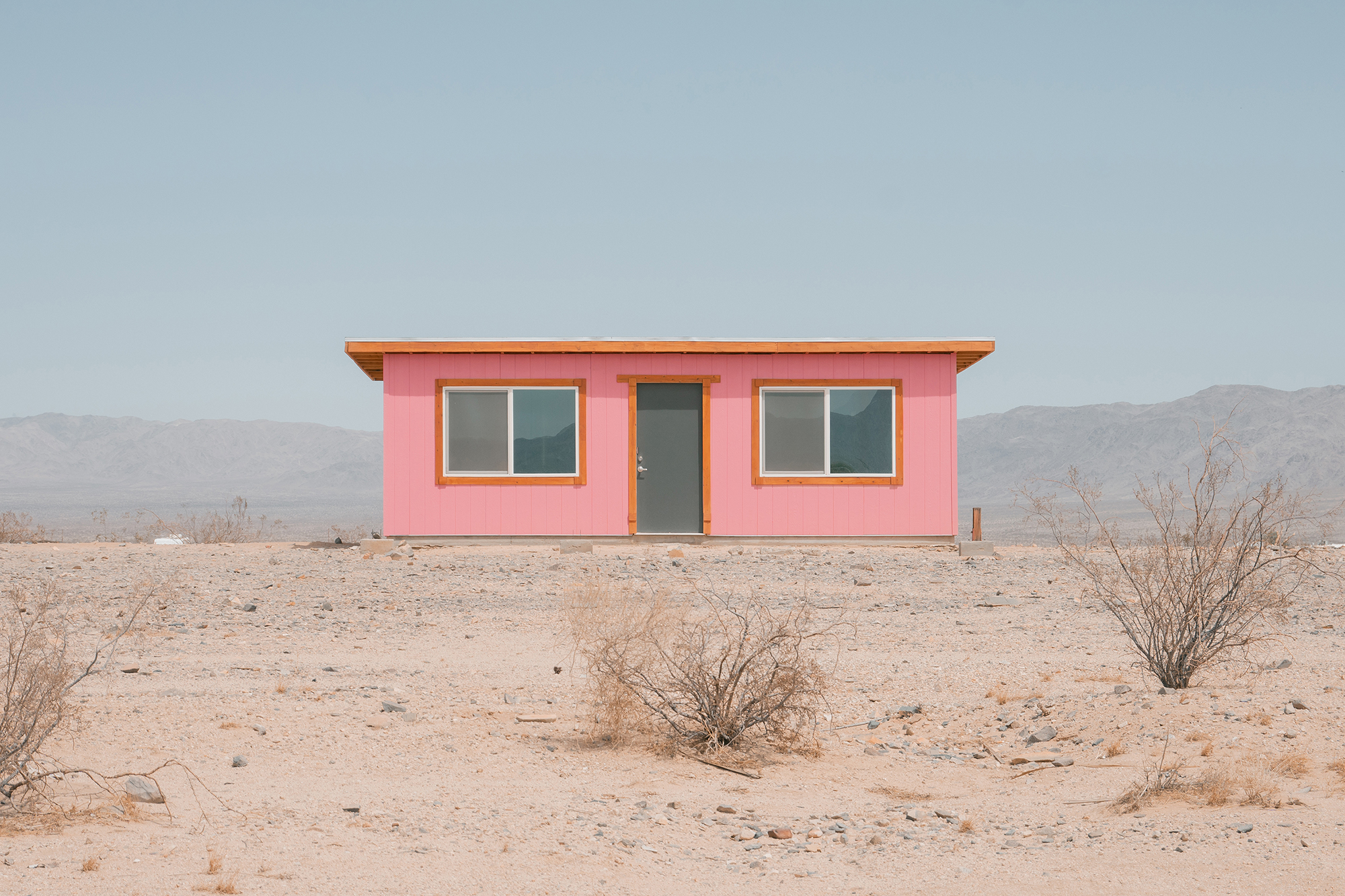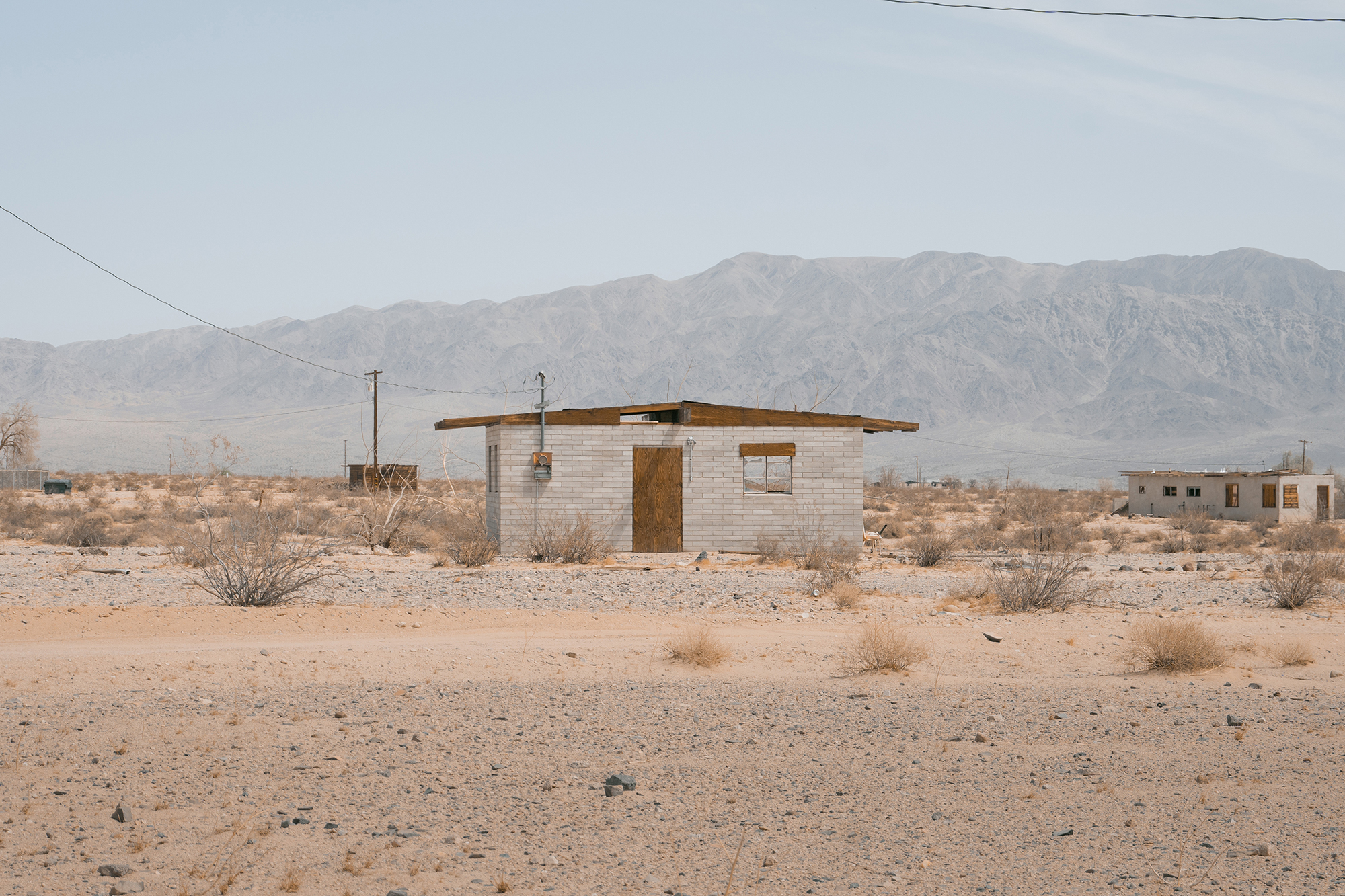Helin Bereket – Arid
When I went to take photos in the Wonder Valley in California, I knew little about the place with small homesteads. I was drawn to it by the sheer aesthetic of abandonment and isolation, of alienation and wreckage, of uncanniness and history unknown. Shack-leftovers stick out from the backdrop where the sandy desert blends with the sun. I think of taming this contrast by harmonising the colour palette and keep wondering about the human traces in what seems to be a reckless wilderness.
Without a plan, I begin to drive around, my eyes scanning for the so-called “Jackrabbit homesteads”, as the cabins east of Twentynine Palms are commonly known. They are the last witness of the 1938 Small Tract Act enabling Americans to obtain five sandy acres of land, deemed unusable by the state. As the condition for owning the land was building a small shackle on the plot, prefabricated or handmade structures sprawled in the Mojave Desert, especially in the ’50s and the ’60s. Among the thousands of dwellers were veterans with lung problems seeking cure in the hot desert air.
An eerie atmosphere. Shacks in decay, some people and dogs in the distance. I realise that not all houses are abandoned. People have their eyes on me, dogs are barking upset by the car engine. I am undecided whether it is more spooky being alone in an unfamiliar desert or being observed by strangers. Luckily I have a telephoto zoom lens. When uncomfortable, I take photos from inside my car inside and drive fast further.
Rough living conditions and lack of proper infrastructure—water and electricity are still scarce—slowly extinguished the enthusiasm of many homesteaders, who abandoned the cabins and left them to slowly disintegrate under natural conditions and vandalism. Today, Wonder Valley’s peculiar mixture of residents consists of very few original homesteaders, squatters who occupied empty cabins in the 70s, and artists who came in the 90s, attracted by the creative potential of the exceptional natural environment.
Photographing one house after the other—three hours go by. Curiosity makes me approach some houses and sneak through the windows. If the sight is not that creepy, I cannot help it but enter inside. Cracked old dishes, shabby furniture, broken stoves and fridges, almost rotten mattresses. The debris of objects stirs my curiosity further and raises a series of questions: What sort of an everyday life took place in here? What jobs did people do? How did the children travel to school? So many unanswerable questions spinning like a whirlpool around my head.
The unoccupied rotten shacks are now subject to grass-roots efforts to demolition for cleaning the bleak landscape. And what nature did not turn into a ramshackle structure with time, the real estate market is transforming into a lucrative opportunity, as the prices of the cabins are suddenly skyrocketing. I realise that unintentionally, simply attracted by the utopic-dystopic visual identity of this place, I have captured a moment of an impressive cultural heritage in transition.
Helin Bereket is a freelance photographer and visual content creator originally from Istanbul, now based in Berlin. After completing her bachelor studies in architecture in Istanbul and working for a couple of years as an architect, she moved to Berlin in 2008 to complete her Master in Art at the Berlin Weissensee School of Art, which opened up new dimensions between architecture and art for her, enabling her to work in a more interdisciplinary way with media such as photography.
She has completed many collaborations with well-known brands such as Nikon, Adobe and Audi.

